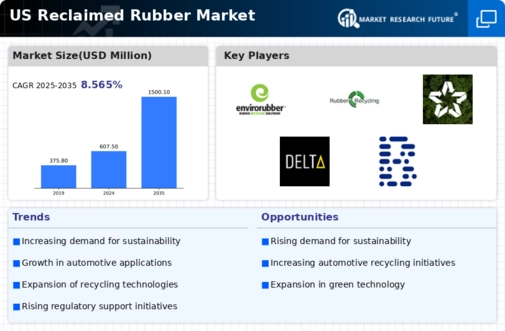The US Reclaimed Rubber Market is a dynamic and rapidly growing sector within the broader rubber industry, characterized by a sharp focus on sustainability and innovative recycling practices. As environmental concerns rise and the demand for eco-friendly products increases, reclaimed rubber is emerging as a viable alternative to traditional rubber, providing both economic and ecological benefits. This market is populated by a range of companies that are cultivating their competitive edge through strategic initiatives, innovation in product development, and a commitment to enhancing the supply chain's sustainability.
These competitive insights reveal the unique positioning of firms operating within the market as they navigate regulatory challenges, consumer preferences, and technological advancement.Reclaim Rubber stands out in the US Reclaimed Rubber Market due to its strong commitment to quality and sustainability. The company has successfully established a robust market presence built on innovative feasibility studies that enhance its product offerings while optimizing the recycling process. Reclaim Rubber's strengths lie in its efficient manufacturing techniques, which effectively reduce waste and energy consumption while producing high-quality reclaimed rubber.
The company benefits from a skilled workforce and maintains strategic partnerships that bolster its position in the market. These advantages allow Reclaim Rubber to meet increasing demand while ensuring compliance with environmental regulations, thereby reinforcing its reputation as a leader in the reclaimed rubber space.Enviro Rubber also plays a significant role in the US Reclaimed Rubber Market, focusing on several key products and services that cater to diverse industrial needs. This company emphasizes developing high-performance products that provide a sustainable alternative to virgin rubber, ensuring they meet rigorous industry standards.
Enviro Rubber's strengths lie in its innovative technologies and advanced recycling processes, which enable it to produce a wide range of reclaimed rubber products suitable for various applications. The company has strategically expanded its footprint through mergers and acquisitions, enhancing its capabilities and diversifying its product range. By leveraging these strengths and continuously investing in research and development, Enviro Rubber has solidified its position within the market and remains a pivotal player in driving the growth of the reclaimed rubber industry in the US.
















Leave a Comment